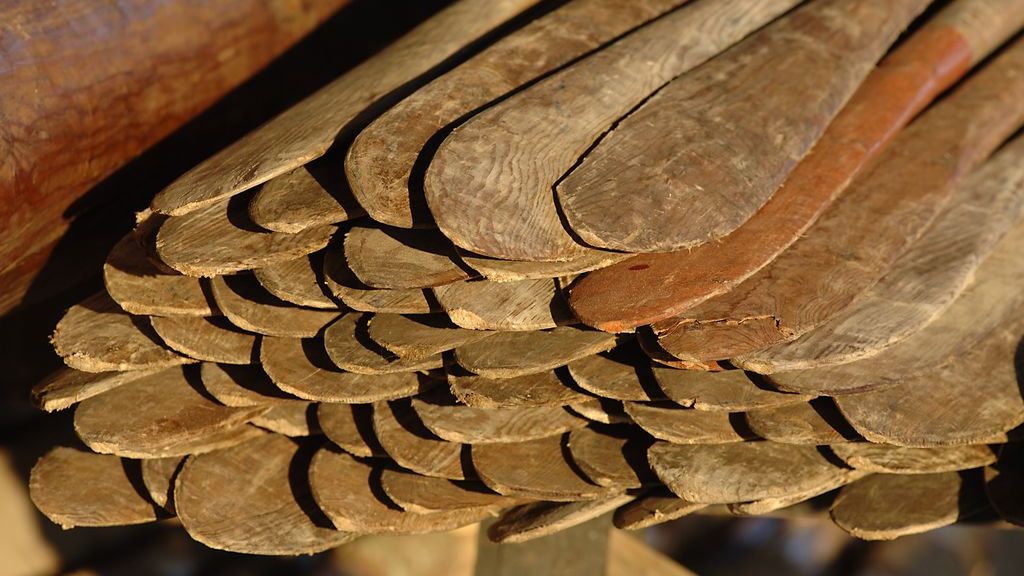On 16 - 17 November 1811, forty four merchant ships disappeared at Rødsand across from Nysted on Lolland. Denmark was at war with England and 120 merchant ships were on their way from Sweden to England. Denmark had an aggressive policy with so-called pinprick attacks by privateers, who could sail quickly out from the coast and board merchant ships. The merchant fleet was therefore escorted by 8-10 British warships, including the ships of the line St. George and Defence. Both ships sank near Thorsminde on the west coast of Jutland on Christmas Eve 1811. More than 1,300 seamen drowned.
While anchored at Rødsand, the large fleet of merchant ships and warships were surprised by a strong wind of hurricane strength. The anchor cables broke on 30 ships and they began to drift helplessly and were never seen again. 2 ships sank immediately, while 12 drifted onto land and were then taken over and emptied by Danes.
Many ships lost their anchors and we know from local fishermen that the area around Rødsand is known for its many anchors.
The maritime archaeology investigation that the Viking Ship Museum carried out prior to the construction of the second large offshore wind turbine park at Rødsand, 3 anchors and a number of anchor chains were found that were more than 100 years old and are therefore protected by the Danish Museum Act. One of the anchors was in danger of being destroyed by the construction of the wind turbines and it was therefore decided to salvage it, conserved it and save it for posterity. The anchor was one of the type equipped with a wooden pole and could therefore very well be one of the many anchors that were lost on the stormy nights in 1811.
The anchor is approximately 2.4 metres long and weighs approximately 350 kg. This anchor probably belonged to a ship that was 25-30 metres long.
During these same dramatic circumstances, the large British ship of the line, St. George, also lost its masts and its enormous rudder. The rudder was found at Rødsand in 2002, where it lay in the area of the first of the large wind turbine parks at Rødsand, which is now known as Nysted Offshore Wind Turbine Park.
The Viking Ship Museum’s pilot studies
In connection with constructions at sea, e.g. wind turbine parks, harbours, gas pipelines and power cables, the Viking Ship Museum’s marine archaeologists examine the sea floor in order to ensure that the construction does not destroy any ancient artefacts. These could be Stone Age settlements, ship wrecks, defence installation, piers, harbour facilities and aircraft wrecks that are artefacts of major cultural and historical value.
The pilot studies can reveal very important finds. Due to the wet and oxygen-poor environment on and in the seabed, the objects that are found there are often in much better condition than can be found on land. Often the objects are clearly displayed on the surface of the seabed. At other times, the cultural treasures are hidden.
“The anchor and the events around the storm 200 years ago tell a frightening story of shipwrecks and war. It is difficult to imagine that one single storm could sink 44 ships, but the anchor and rudder from the St. George that we found seven years ago, are firm evidence of the events" explains Jørgen Dencker, head of the Viking Ship Museum's marine archaeology department, who participated in the salvage operation.
The anchor is now in the care of the National Museum of Denmark’s conservation department, who will examine further over the coming period.
Facts:
It is the builders who pay for pilot studies of the seabed in connection with construction projects. In this case, the energy company E.ON Danmark are the developers behind the offshore sea turbine park, the so-called Rødsand 2. When the wind turbine park is completed, there will be 90 wind turbines supplying 200,000 households with renewable energy, corresponding to 2% of Denmark’s total energy consumption.
Both the concrete pilot study, the salvage operation and the subsequent conservation of the anchor is being paid for by E.ON.



